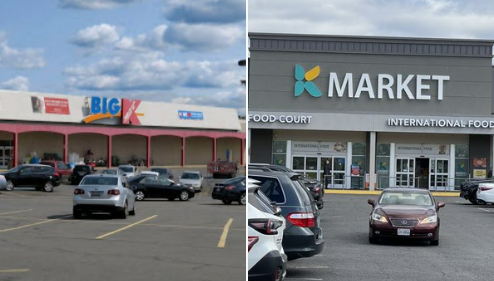Kmart—a name once etched into the daily rhythm of American life—now drifts toward its final chapter. Imagine it… shelves once brimming with appliances, clothes, toys… now empty, ghostly quiet. In Bridgehampton, New York, the last full-sized Kmart will soon vanish, doors set to close on October 20th. A flicker in the distance of what used to be a bright, unmissable flame.
Kmart’s blue light fades to black with the shuttering of its last full-scale U.S. storehttps://t.co/dPRM5sfQnR pic.twitter.com/gUUSyuPEVJ
— The Washington Times (@WashTimes) September 23, 2024
This isn’t just about one store, though. It’s a slow fade, years in the making. Kmart had its golden age, where the aisles buzzed with life, where the chain became a retail giant. But with time came cracks—merging with Sears in 2005 under hedge-fund CEO Eddie Lampert didn’t save it, only hastened the crumble. And when the dust settled, bankruptcy in 2018 sealed its fate… a slow-motion collapse.
The world of shopping shifted, transforming from moving to shop to clicking, from wandering aisles to scrolling pages. Kmart simply couldn’t keep pace with that rhythm of modernism. The Hamptons store—a sprawling 90,000 square feet—stood like a relic, clinging to a way of life that had slipped away. For 25 years, it stood—a snapshot of a time when you didn’t just shop, you wandered, you felt… you found what you didn’t know you needed.
KMart is closing it last store, so let play a game… pic.twitter.com/n8wqgMpL2u
— Lebang Moloi (@lebang_moloi) September 24, 2024
And now, just whispers remain. There’s a smaller outpost in Miami, serving more like a convenience store… and others far off in places like Guam, the U.S. Virgin Islands. Not exactly the Kmart you remember.
Its slow decaying from the market echoes the fate of other retail titans—Sears, Toys R Us, Borders—all of them are sweeping aside by the tide of a new era. COVID-19 only sharpened the blade, speeding the fall of those unable to adapt. Laden with debt, unable to respond, they drifted out of step with a world that now demanded speed, convenience… clicks over footfalls.
The town I grew up in did indeed have one. It went from Kmart to Kmarket. pic.twitter.com/sprPksJpSP
— Beth P. (@BethP9999) September 24, 2024
As each store closes, it’s not just a brand we lose—it’s an era. We say goodbye to those afternoons spent strolling down aisles, picking up something unexpected, something tangible. Farewell to a time when shopping was an event, not just a transaction tapped on a screen.
Major Points
- Kmart’s final full-sized store in Bridgehampton, New York, will close its doors on October 20th, marking the near end of a once-iconic retail chain.
- Once a dominant force in American shopping, Kmart’s decline was accelerated by its 2005 merger with Sears and subsequent bankruptcy in 2018.
- Changing consumer habits, from in-person shopping to online retail, left Kmart struggling to keep pace, contributing to its slow-motion collapse.
- The closure of the 90,000 square-foot store symbolizes a fading era of leisurely shopping experiences, now replaced by convenience and digital commerce.
- While smaller Kmarts remain in Miami, Guam, and the U.S. Virgin Islands, the chain’s decline reflects the broader trend of traditional retailers disappearing in the face of modern shopping trends.
James Kravitz



